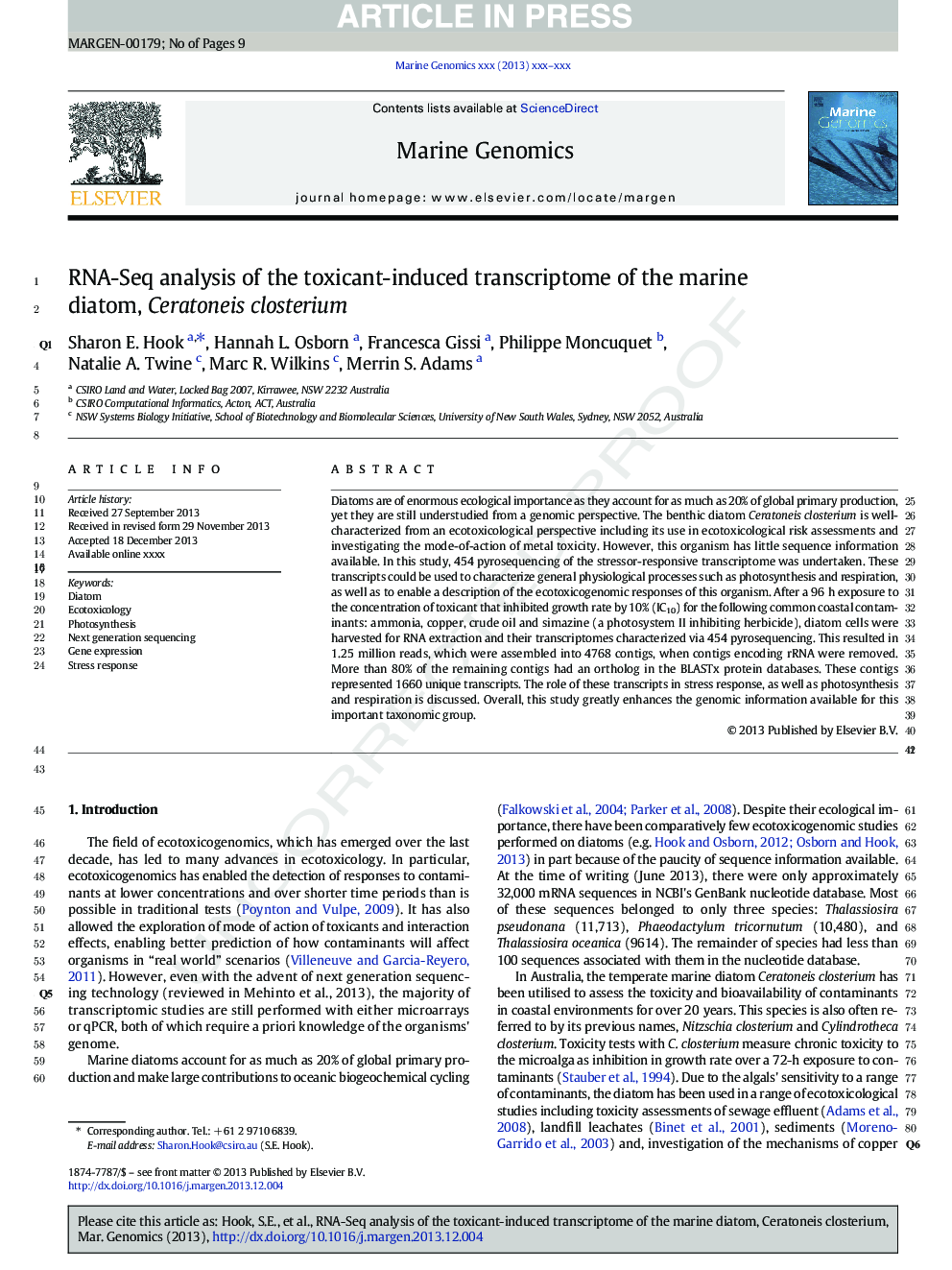| Article ID | Journal | Published Year | Pages | File Type |
|---|---|---|---|---|
| 8388570 | Marine Genomics | 2014 | 9 Pages |
Abstract
Diatoms are of enormous ecological importance as they account for as much as 20% of global primary production, yet they are still understudied from a genomic perspective. The benthic diatom Ceratoneis closterium is well-characterized from an ecotoxicological perspective including its use in ecotoxicological risk assessments and investigating the mode-of-action of metal toxicity. However, this organism has little sequence information available. In this study, 454 pyrosequencing of the stressor-responsive transcriptome was undertaken. These transcripts could be used to characterize general physiological processes such as photosynthesis and respiration, as well as to enable a description of the ecotoxicogenomic responses of this organism. After a 96Â h exposure to the concentration of toxicant that inhibited growth rate by 10% (IC10) for the following common coastal contaminants: ammonia, copper, crude oil and simazine (a photosystem II inhibiting herbicide), diatom cells were harvested for RNA extraction and their transcriptomes characterized via 454 pyrosequencing. This resulted in 1.25Â million reads, which were assembled into 4768 contigs, when contigs encoding rRNA were removed. More than 80% of the remaining contigs had an ortholog in the BLASTx protein databases. These contigs represented 1660 unique transcripts. The role of these transcripts in stress response, as well as photosynthesis and respiration is discussed. Overall, this study greatly enhances the genomic information available for this important taxonomic group.
Related Topics
Physical Sciences and Engineering
Earth and Planetary Sciences
Earth and Planetary Sciences (General)
Authors
Sharon E. Hook, Hannah L. Osborn, Francesca Gissi, Philippe Moncuquet, Natalie A. Twine, Marc R. Wilkins, Merrin S. Adams,
